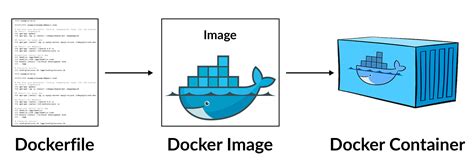Dockerfiles are hailed as a simple and efficient way to declaratively configure containers. However, when it comes to nuances like the behavior of ARG values, a closer look reveals unexpected challenges. While some users find Dockerfiles intuitive and powerful, others stumble upon subtle gotchas that can lead to confusion and frustration. The comments from the community paint a vivid picture of the diverse experiences encountered in the realm of containerization and DevOps.
MereInterest’s detailed analysis raises an interesting point about the composition of Dockerfiles. The ability to build each package in isolation and then all together in one image is often hindered by the lack of subroutine-like functionality in Dockerfiles. This limitation can lead to unintentional image bloat and order-dependent commands, highlighting the need for careful structuring of Dockerfile commands to avoid unexpected outcomes.
The discussion on the persistence of variables across different stages in multistage builds reveals a subtle yet crucial aspect of Dockerfile behavior. Understanding the scoping rules and the implications of commands like ARG and ENV is essential to predict how values propagate through the build process. While some users navigate these intricacies smoothly, others find themselves grappling with unexpected behaviors due to scoping complexities.
The debate around documentation quality and user expectations sheds light on the critical role of clear, comprehensive guidance in the adoption of tools like Docker. From the principle of least surprise to the challenges of finding relevant information efficiently, users emphasize the importance of user-centric documentation. The balance between providing detailed technical insights and intuitive user support remains a key aspect in enhancing the user experience.
Exploring the parallels between shell scripting and programming languages like Golang, the comments unravel the trade-offs in simplicity, debugging, and maintenance. While shell scripts offer rapid iteration and ease of use, they can quickly become unwieldy for complex tasks. Transitioning to more structured languages can offer benefits in type safety, error handling, and modularity, yet comes with its own set of challenges and learning curves.
The varied perspectives on the use of advanced features like subprocess management in Python versus shell scripting underscore the nuances of tool selection in different scenarios. While shell scripts excel in rapid prototyping and command invocation simplicity, interpreted languages like Python provide stronger typing and control over error handling. The choice between scripting languages and compiled languages often boils down to the specific requirements of the task at hand and the familiarity of the user with each toolset.
From intricate details of Dockerfile behavior to broader reflections on the state of modern DevOps and infrastructure management, the journey through user comments reveals a tapestry of experiences and insights. Each comment contributes a unique viewpoint, highlighting both the benefits and challenges of using tools like Docker, shell scripting, and programming languages in the realm of software development and deployment.
As the technology landscape continues to evolve, the complexities and trade-offs in tool selection, documentation quality, and user experience become increasingly pronounced. Navigating the nuances of Dockerfile usage, scoping rules, and documentation pitfalls requires a blend of technical expertise, user empathy, and a keen eye for detail. By delving into the experiences and insights shared by the community, we unravel the hidden layers of complexity within seemingly straightforward tools and processes.
The interplay between user expectations, tool design, and documentation quality forms a delicate balance in the world of software development and DevOps. As developers and operations teams grapple with the intricacies of containerization, scripting languages, and infrastructure management, the insights shared in these comments serve as a compass for navigating the ever-changing landscape of technology and best practices. From powerful features like multistage builds to seemingly subtle gotchas, each aspect of tooling holds the potential for discovery, learning, and improvement.


Leave a Reply